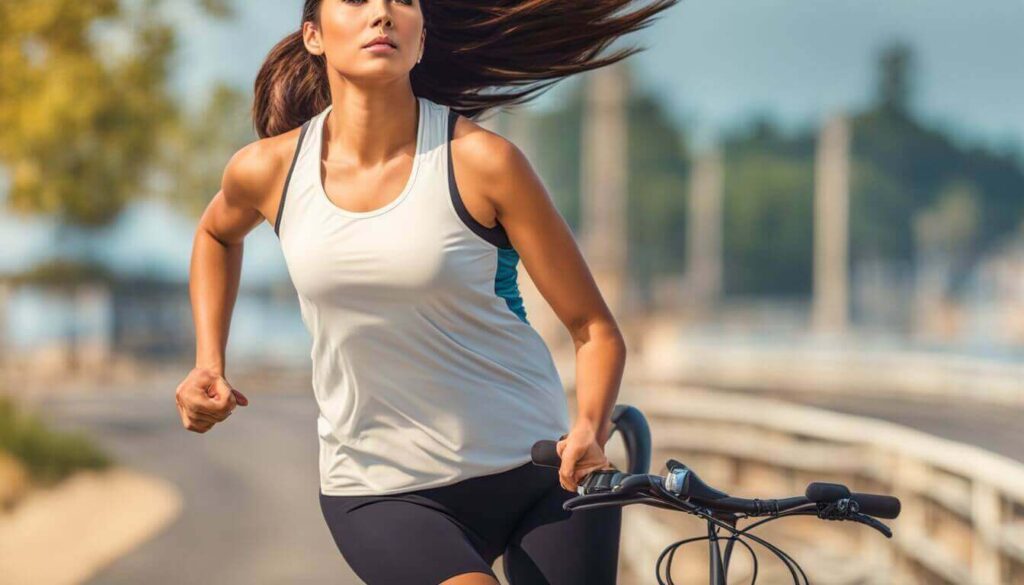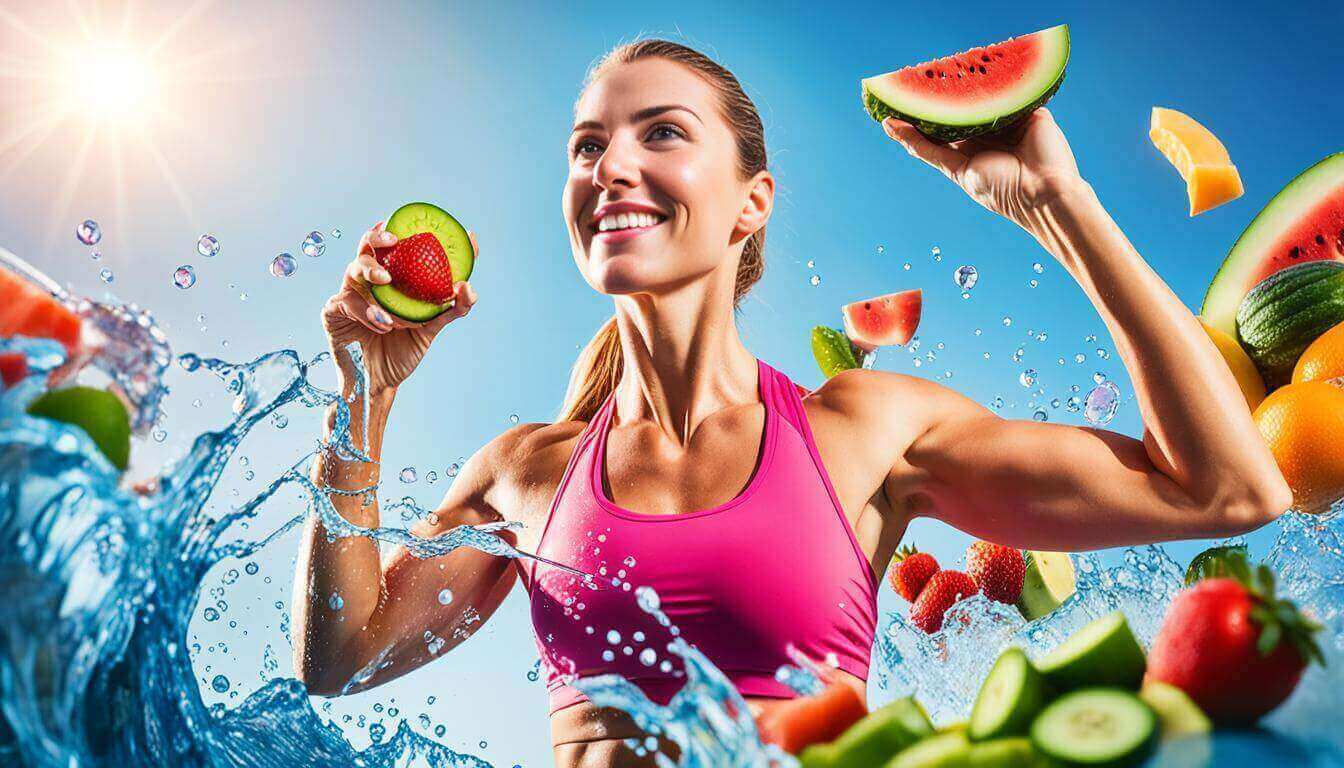Give your body something that it requires, essential for optimum health and function in human movement. Hydration and specifically optimal hydration is a way for women to aid the overall health, performance, and recovery of their life! This article will answer why hydration is so significant for women’s fitness and what benefits we get, the science behind it as well & tips to keep hydrated.
The Role of Hydration
This is an obvious answer – hydration simply means the process of supplying our body with water during its activities and functions. Water: Water is a key nutrient that assists in many physiological processes like temperature regulation, and joint lubrication, delivers nutrients, and excretes waste. Women who exercise a lot require even more hydration.
The Science Behind Hydration
This demonstrates how water is vital to our bodies (about 60% of it!) This will affect the balance of your body water: Hormonal fluctuations Women are men, women with changes in female hormones. It leads to sweating, and exhalation causing secretion of water from your body while exercising. Losing this fluid and not replacing it can lead to dehydration, which impairs performance at best or illness if chronic.
When your body loses more fluids than it intakes, you get dehydrated Poor physical and cognitive performance Experience declines because even mild dehydration affects durability. Dehydration In dehydration symptoms include headaches dizziness fatigue and inability to focus. Women who have even greater fluid loss during their periods need to pay close attention to remaining hydrated 19.

1. A More Powerful Option With Greater Range
The relation between proper hydration and better athletic performance is direct. This way water is fundamental for maintaining the blood volume necessary to deliver oxygen and nutrients to muscles. Depleted blood volume from dehydration limits cardiac output and compromises exercise capacity. Staying hydrated is more important for women as they engage in endurance sports or high-intensity workouts serving two purposes: achieving new personal bests instead of feeling wiped out after half an hour.
2. Optimal Muscle Function
Our muscles are made up of almost 75% water, so their ability to fire correctly depends on you staying well hydrated. Proper water intake makes contracting and relaxing of muscles easier making you less prone to cramps or injuries. For girls that are initiating with strength training or using a weight translation type of exercise, hydration supports the healing/repair and growing method of your muscle by removing metabolic waste products.
3. Temperature Regulation
When women are compared to men, they have a higher percentage of body fat and lower sweat rates which can impair their ability to regulate internal temperature during exercise. Sweat is how the body purges heat and water, as we all know. Hydrating yourself can also help regulate and maintain your core body temperatures preventing heat-related illnesses such as Heat Exhaustion &Heat Stroke.
4. Joint Health
Remaining properly hydrated will help joints stay lubricated, hence reducing friction and wear. Women in particular seem to suffer from more joint complaints like for example osteoarthritis. It can reduce joint pain, increase flexibility and make working out more comfortable which makes it much easier to get a workout in.
5. Cognitive Function
It also influences cognitive function and mood. However, dehydration will result in a loss of concentration poor decision-making, and an increased rate scale of effort during exercise from optimal! Women need to maintain mental clarity and focus while balancing fitness with work family and other responsibilities. When well-hydrated, your brain functions better and can handle stress more effectively.

1. Know Your Hydration Needs
Natural hydration requirements depend on age weight activity and climate. In general, women should drink at least 2.7 liters (91 ounces) of water per day with an additional intake during exercise. Tuning into thirst cues and tracking your urine color may also serve as signals for hydration status. Urine that is a pale yellow color typically means a proper state of hydration.
2. Before and After Exercise, Have adequate water
Before the exercise begins, drinking plenty of water is mandatory as it helps to increase performance. Get in at least 16-20 ounces of water two to three hours before what you consider the beginning part of your workout. If you can, try to drink 7-10 ounces of water every 10-20 minutes during exercise. Tepid Water immediately after: Re-hydrate lost fluids post-workout, by drinking 16-24 ounces of water in fact that goes for each pound of body weight you got off during the workout.
3. Incorporate Hydrating Foods
Hydrating foods may help to increase in total fluid intake besides drinking water. Fruits and vegetables that are high in water include grapes, cucumbers, oranges melons berries spinach you can be fueled up on essential vitamins and minerals too. Add to that the fact these foods all double as sources of water, and can help keep you not only nourished but also hydrated.
4. Use Electrolyte Solutions
During prolonged or intense exercise electrolytes like sodium potassium and magnesium can be lost through sweat needing replacement. Sports drinks, coconut water, and electrolyte tablets are also useful to maintain the balance of your pH levels and prevent dehydration. Just watch out for added sugars in commercial sports drinks.
5. Control the Environment
Increases also transport fluid out of sweat, which helps the loss of blood mist evaporate at a high temperature and humidity. On the other hand, dehydration can be unintentional as a colder environment could decrease thirst. Monitor the weather: adapt your hydration strategy to suit
6. Carry a Water Bottle
A water bottle in your desk can serve as a visual reminder to drink throughout the day. Using a reusable water bottle can avoid environmental hazards and you will also have access to drinking quality of water from wherever in this world. Other bottles, such as the H2O4K9 have markers for tracking water and aim to make drinking fun.
7. Set Hydration Goals
Implementing hydration goals can build a consistent habit. Essentially strive to drink one glass of water at your meals and snacks as well before and after you work out. Encourage smartphone apps or alarms to drink water at intervals of time.
8. Listen to Your Body
Listen to what your body needs and address symptoms of dehydration quickly. If you have already become thirsty, it is way too late (as your body sounds the alarm when 1% water lost), so there’s no denying that we must drink water regularly during the day – thirst or not. Dry mouth, dark urine and fatigue are also signs that you need to drink more water.
Conclusion
This is one of the basics that should not be overlooked by ladies when it comes to fitness. From improving muscle function to maintaining the body temperature and joint health while supporting cognitive functions, women who understand how crucial water is can do much better on their road of overall fitness. Using practical hydration approaches, such as pre-, during and post-exercise ingestion of fluids or hydrating foods along with environmental monitoring can provide the female athlete with enough fluid to achieve their fitness goals.
Keep in mind that hydration is not a one-size-fits-all strategy! The reality is every woman needs different requirements out of her water intake and it may take some time to customize your ideal hydration schedule. Taking the first step towards treating hydration as part of your workout, you will move closer to optimal health better performance and overall wellness.

